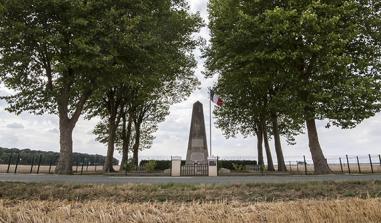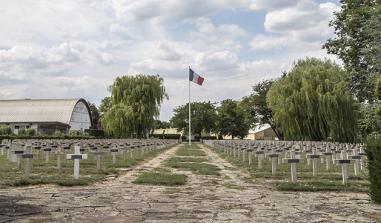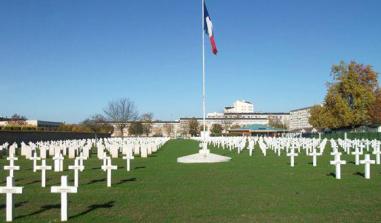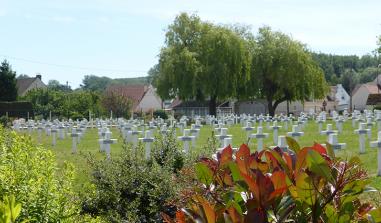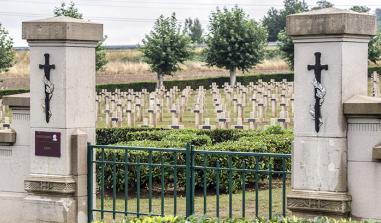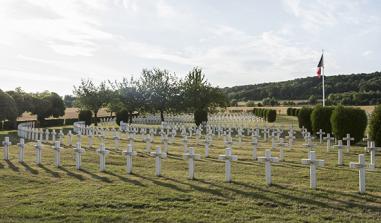Catenoy National Cemetery
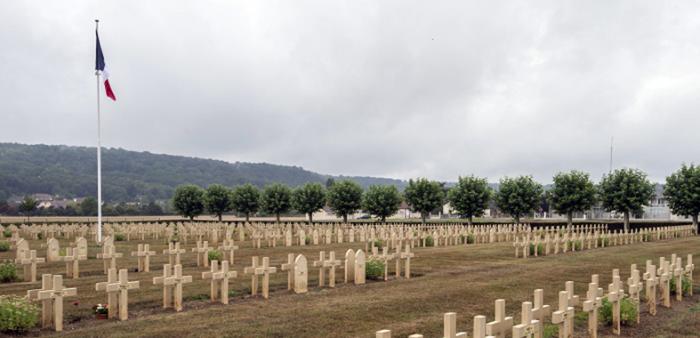
Catenoy National Cemetery. © ECPAD
Click here to view the cemetery’s information panel 
Catenoy National Cemetery contains the remains of French soldiers killed in the battles of the Oise. Laid out in 1921, it holds bodies exhumed from the department’s military cemeteries in Catenoy, Breuil-le-Sec, Épineuse, Angicourt, Mouy, Saint-Rémy, Litz and Plessis-Villette. In 1965 and 1970, bodies exhumed from the municipal military cemeteries of Clermont and Creil were also buried here. The cemetery contains the bodies of nearly 1 800 soldiers killed in the Great War, including two pilots: one Australian, killed on 4 June 1918, and one British, killed on 7 June 1918. One Russian and four French soldiers killed in the Second World War are also laid to rest here.
The Battles of the Oise, 1914-18
In August 1914, as set out in the Schlieffen Plan, German troops entered Belgium and marched on Paris. They crossed the Oise and the Aisne before being stopped by the French counter-offensive on the Marne. The two armies then established a front from Verdun to Dunkirk; the right bank of the Oise was occupied by the Germans, while fierce fighting took place on the left bank, with the zouave regiments particularly distinguishing themselves.
For three years, from September 1914 to March 1917, the front didn’t budge. Noyon came under one of the strictest occupations, and the Oise saw no major military operations; it was a “quiet” sector. The French and German troops consolidated their positions, occupying underground quarries, which they decorated and carved.
At the end of 1916, the German command wanted to strengthen the front, and therefore decided to abandon the Noyon sector. Applying a scorched earth policy, the Germans retreated to the Hindenburg Line, which they had just established, thereby limiting the effects of an Allied offensive in this sector. By mid-March 1917, the area was liberated, but in ruins: the houses had been dynamited, the fields flooded, and the bridges and junctions destroyed.
However, the respite was short-lived. Less than a year later, 27 German divisions broke through the British front across 80 km and swept towards Noyon which, on 25 March 1918, found itself occupied once again. Entrenched on Mont Renaud, overlooking the town, the French drove back 23 German attacks, and for over a month shelled the enemy positions. Spared up until now, Noyon was completely destroyed.
On 9 June 1918, the German command ordered a fresh offensive. The Oise then became the scene of a bitter struggle, known as the Battle of Matz, during which the two enemy armies employed heavy artillery and tanks without reserve. Over the first few days, the German army made rapid progress. But due to major losses, their advance was halted at Compiègne. Led by General Mangin, the French army regained the initiative, liberating the Thiescourt massif and crossing the River Divette. On 30 August, Noyon was liberated for good.
The first department on the front line to come back under French control, the Oise has preserved the memory of that bitter fighting and, with the signing of the Armistice on 11 November 1918 in the forest of Rethondes, it became one of the symbols of the Great War.
Catenoy, military hospital no 36
For the duration of the war, the village of Catenoy was a key site for the stationing of troops by the French Army. The writers Roland Dorgelès and Charles Péguy stayed here before going to the front.
However, in January 1918, the 3rd Army, which had its command in Clermont and the headquarters of its medical service in Nointel, decided to install a military hospital there. Ever increasing numbers of wounded were arriving each day, and required triage, treatment and evacuation to more appropriate care facilities. From 8 April 1918, the village was home to a military hospital with 1 500 beds (900 for the wounded, 400 for the gassed and sick, and 200 for the lame). The proximity of the N31 road and the Beauvais-Compiègne railway line made for the efficient treatment and rapid evacuation of the wounded who flooded in from the front. By the end of May, the hospital was up and running. Within less than ten days, it had received some 2 500 sick and wounded men, and contributed to 15 ambulance trains.
During the Battle of Matz, from 9 to 14 June, Catenoy hospital, with its 12 surgical teams, received a continuous stream of ambulances from the battlefield. Stretchers piled up in the triage shelters. Surgical staff worked tirelessly, attending to each of the wounded in turn and carrying out more than 700 serious operations in the two operating wings. Over 5 000 soldiers passed through the hospital, which was the 3rd Army’s largest. Owing to the dedication of chaplain Père Fonteny, some of the soldiers who did not survive their wounds are laid to rest in Catenoy National Cemetery.
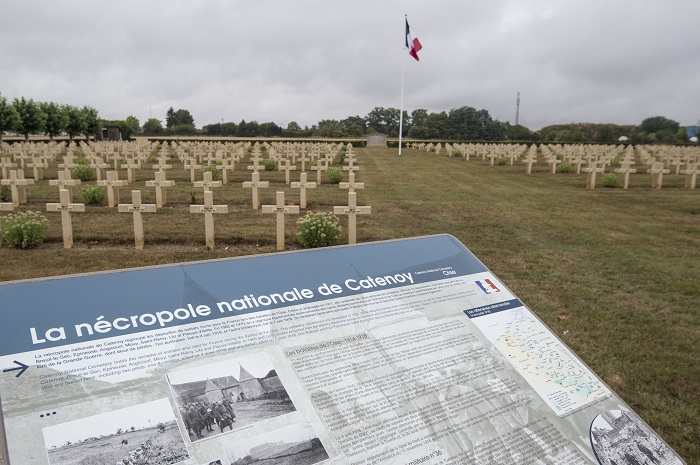
Catenoy National Cemetery. © ECPAD
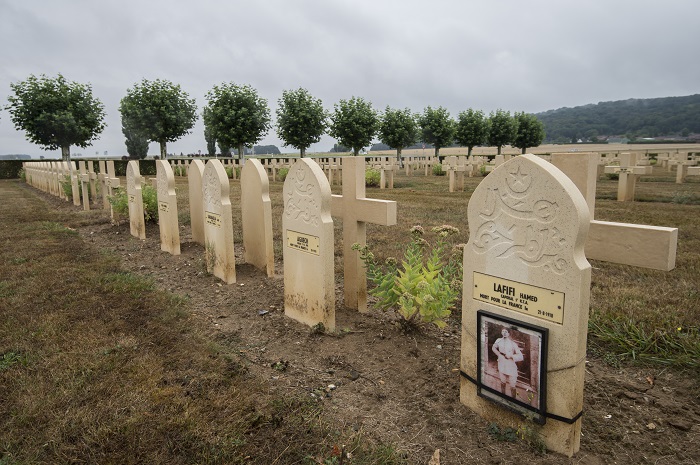
Catenoy National Cemetery. © ECPAD
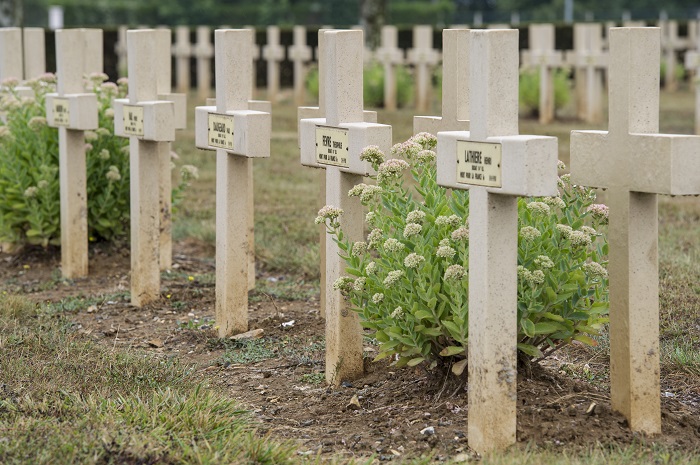
Catenoy National Cemetery. © ECPAD
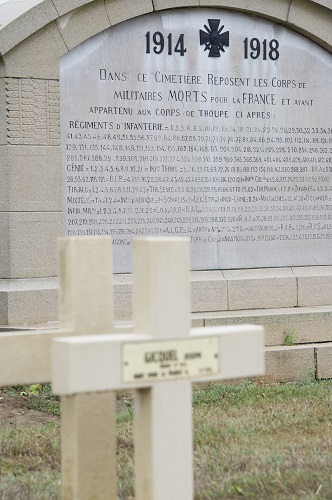
Catenoy National Cemetery. © ECPAD
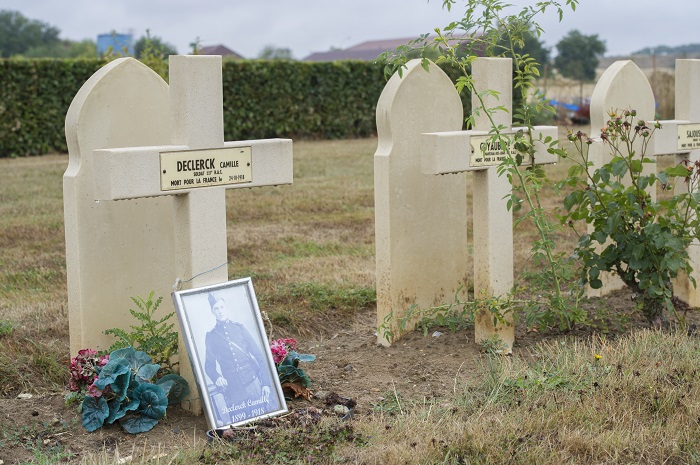
Catenoy National Cemetery. © ECPAD
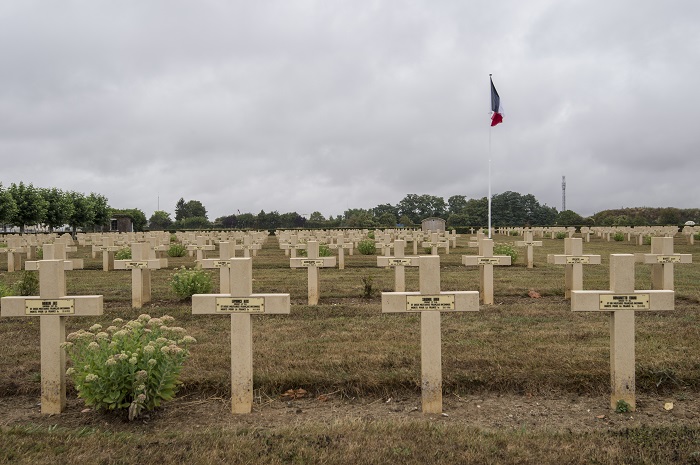
Catenoy National Cemetery. © ECPAD
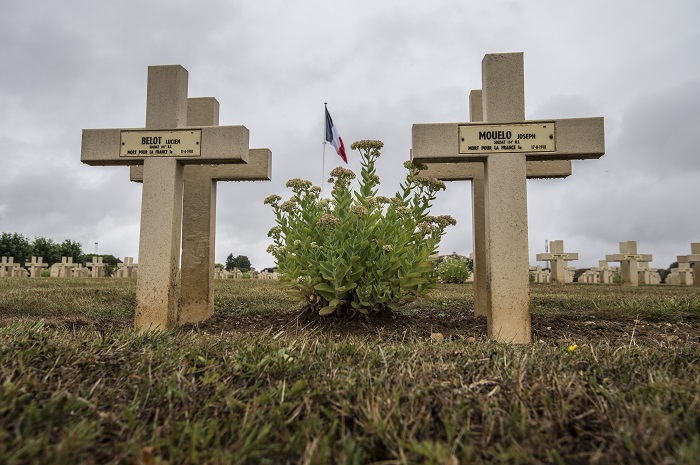
Catenoy National Cemetery. © ECPAD
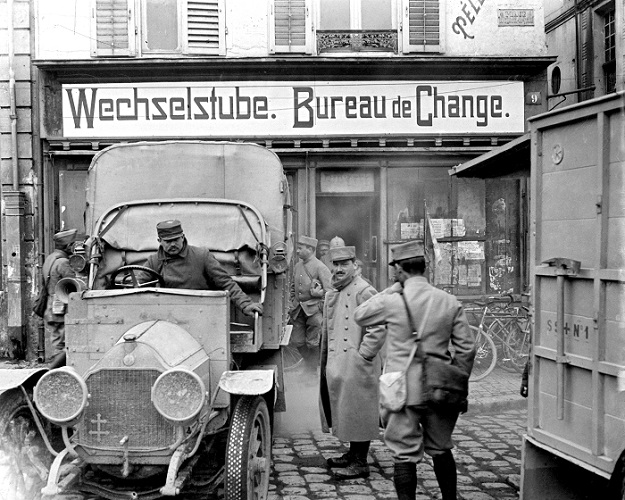
Entrance to a former bureau de change at Noyon, 20 March 1917. The façade of the building, on Place de l’Hôtel de Ville, remained as it was before the German retreat to the Hindenburg Line, although it does appear to have been turned into a bar, as the sign above the entrance suggests. © ECPAD
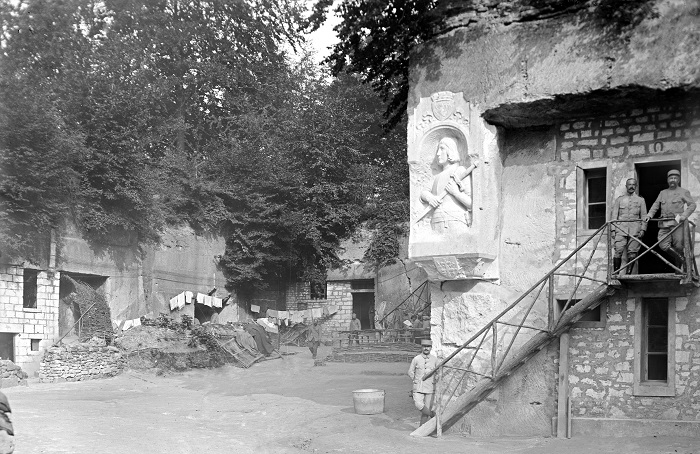
Entrance to the Chauffour quarry. Lying northeast of the Butte du Plémont, in the Lassigny area, the Chauffour quarry was occupied and fitted out by French soldiers, who built washbasins, barrack rooms, kitchens and other lodgings for officers. Many statues and bas reliefs were also made, by artists including Leclabart, who carved a statue of Joan of Arc and a Sphinx’s head that dominates the entrance. © ECPAD
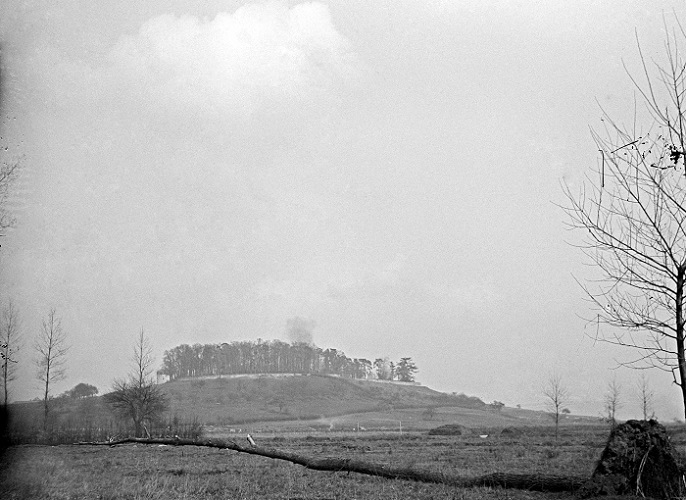
A shell explosion on Mont Renaud. © ECPAD
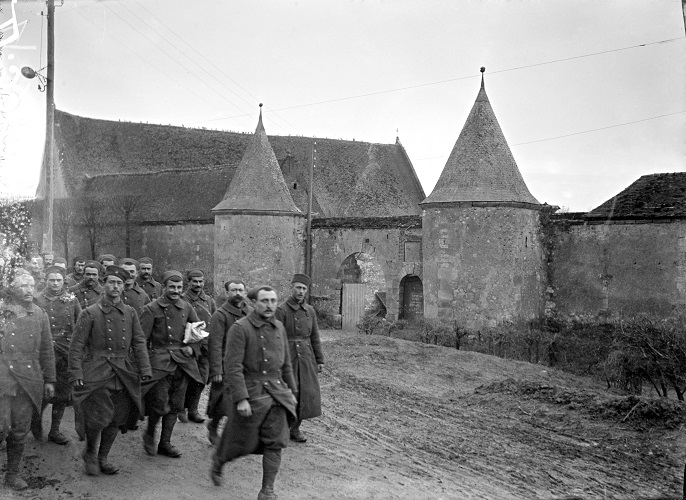
The Moroccan division stationed in the Froissy sector, in the Oise. © ECPAD
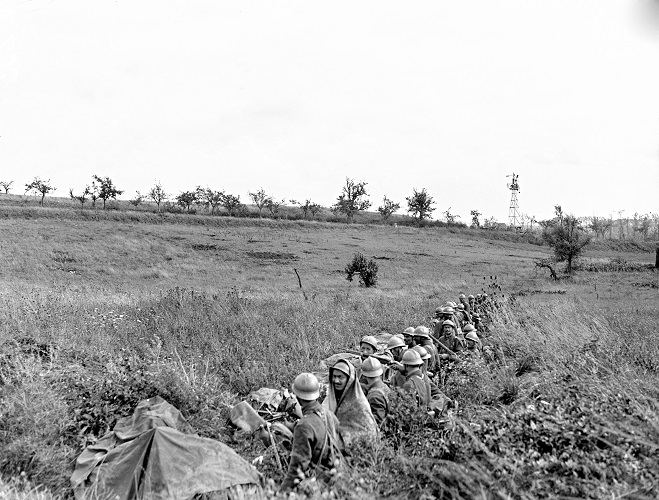
French soldiers in position before Mont Renaud, as it is about to be recaptured, Passel, 29 August 1918. © ECPAD
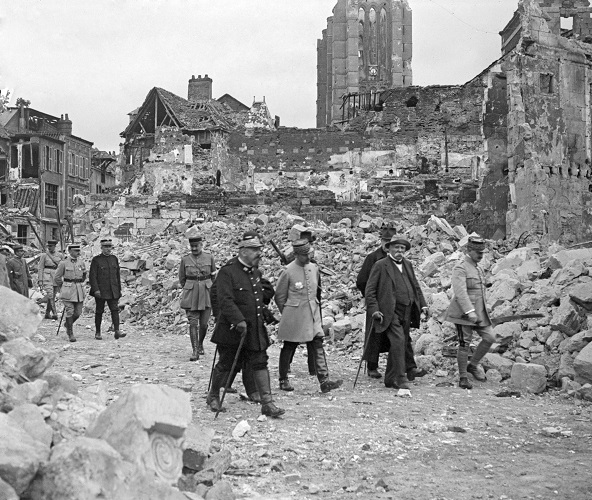
Official visit by Georges Clemenceau to the ruins of Noyon. Accompanied by M. Noel, mayor of Noyon, M. Favre, prefect of the Oise, and generals Humbert, commander of the 3rd Army, and Mordacq, commander of the 120th Infantry Division, Georges Clemenceau visited the ruins of the liberated town of Noyon. In the background are the towers of the bombed cathedral. From left to right: Prefect of the Oise, M. Favre; General Humbert; Georges Clemenceau; and General Mordacq. © ECPAD
Practical information
Catenoy
Unguided visits throughout the year
Read more
Read more
Oise Departmental Tourist Board
Rue du Pont de Paris – 60008 Beauvais Cedex
Tel. : + 33 (0)3 44 45 82 12


